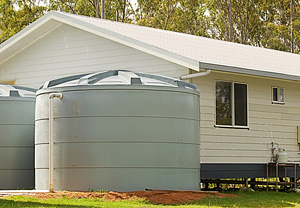Adaptation Actions for Water Management and Ecosystem Protection
 The adaptation strategies provided below are intended to inform and assist communities in identifying potential alternatives. They are illustrative and are presented to help communities consider possible ways to address anticipated current and future climate threats to contaminated site management.
The adaptation strategies provided below are intended to inform and assist communities in identifying potential alternatives. They are illustrative and are presented to help communities consider possible ways to address anticipated current and future climate threats to contaminated site management.
- Adaptation Actions
- Source Documents
- Disclaimer
Maintain and Restore Wetlands
- Allow coastal wetlands to migrate inland (e.g., through setbacks, density restrictions, land purchases
- Create a regional sediment management (RSM) plan
- Develop adaptive stormwater management practices (e.g., promoting natural buffers, adequate culvert sizing)
- Establish rolling easements
- Identify and protect ecologically significant ("critical") areas such as nursery grounds, spawning grounds, and areas of high species diversity
- Incorporate wetland protection into infrastructure planning (e.g., transportation planning, sewer utilities)
- Maintain Sediment Transport
- Preserve and restore the structural complexity and biodiversity of vegetation in tidal marshes, seagrass meadows, and mangroves
- Prohibit hard shore protection
- Promote wetland accretion by introducing sediment
- Remove hard protection or other barriers to tidal and riverine flow (e.g., riverine and tidal dike removals)
- Trap or add sand through beach nourishment – the addition of sand to a shoreline to enhance or create a beach area
- Trap sand through construction of groins – a barrier type structure that traps sand by interrupting longshore transport
Preserve Coastal Land and Development
- Create permitting rules that constrain locations for landfills, hazardous waste dumps, mine tailings, and toxic chemical facilities
- Incorporate consideration of climate change impacts into planning for new infrastructure (e.g., homes, businesses)
- Integrate coastal management into land use planning
- Integrated Coastal Zone Management (ICZM) – using an integrated approach to achieve sustainability
- Land acquisition program – purchase coastal land that is damaged or prone to damage and use it for conservation
- Land exchange programs – owners exchange property in the floodplain for county-owned land outside of the floodplain
- Manage realignment and deliberately realign engineering structures affecting rivers, estuaries, and coastlines
Use "Soft" Shoreline Maintenance
- Composite systems – incorporate elements of two or more methods (e.g., breakwater, sand fill, and planting vegetation)
- Create dunes along backshore of beach; includes planting dune grasses and sand fencing to induce settling of wind-blown sands
- Create marsh by planting the appropriate species – typically grasses, sedges, or rushes – in the existing substrate
- Increase shoreline setbacks
- Install rock sills and other artificial breakwaters in front of tidal marshes along energetic estuarine shores
- Plant SAV (such as sea grasses) to stabilize sediment and reduce erosion
- Redefine riverine flood hazard zones to match projected expansion of flooding frequency and extent
- Remediate Brownfield sites in coastal areas and develop parkland along the waterfront that explicitly accounts for sea-level rise
- Remove shoreline hardening structures such as bulkheads, dikes, and other engineered structures to allow for shoreline migration
- Replace shoreline armoring with living shorelines – through beach nourishment, planting vegetation, etc
- Restrict or prohibit development in erosion zones
- Use natural breakwaters of oysters (or install other natural breakwaters) to dissipate wave action and protect shorelines
Use "Hard" Shoreline Maintenance
- Fortify dikes
- Harden shorelines with breakwaters – structures placed offshore to reduce wave action
- Harden shorelines with bulkheads – anchored, vertical barriers constructed at the shoreline to block erosion
- Harden shorelines with revetments that armor the slope face of the shoreline
- Harden shorelines with seawalls
- Headland control – reinforce or accentuate an existing geomorphic feature or create an artificial headland (e.g., Geotextile tubes)
Preserve Habitat
- Adapt protections of important biogeochemical zones and critical habitats as the locations of these areas change with climate
- Connect landscapes with corridors to enable migrations
- Design estuaries with dynamic boundaries and buffers
- Expand the planning horizons of land use planning to incorporate longer climate predictions
- Purchase upland development rights or property rights
- Replicate habitat types in multiple areas to spread risks associated with climate change
- Retreat from, and abandonment of, coastal barriers
Maintain Water Quality and Availability
- Create water markets – transferring land and water from agricultural to community use
- Design new coastal drainage system
- Develop adaptive stormwater management practices (e.g., remove impervious surface, replace undersized culverts)
- Establish or broaden "use containment areas" to allocate and cap water withdrawal
- Incorporate sea level rise into planning for new infrastructure (e.g., sewage systems)
- Integrate climate change scenarios into water supply system
- Manage water demand (through water reuse, recycling, rainwater harvesting, desalination, etc.)
- Plug drainage canals
- Prevent or limit groundwater extraction from shallow aquifers
Source Documents
These strategies are adapted from existing EPA, CDC and other federal resources. Please view these strategies in the context provided by the primary source document:
- Adapting to Climate Change: A Planning Guide for State Coastal Managers (PDF)(138 pp, 1.7 MB, About PDF)
Disclaimer
The adaptation strategies provided are intended to inform and assist communities in identifying potential alternatives. They are illustrative and are presented to help communities consider possible ways to address anticipated current and future climate threats to contaminated site management. Read the full disclaimer.
